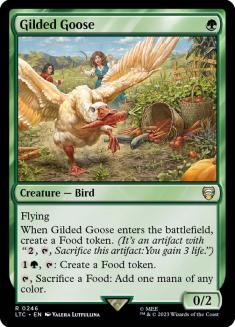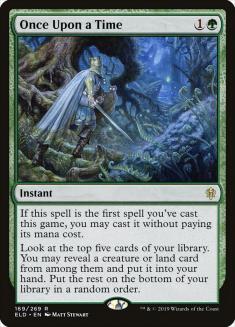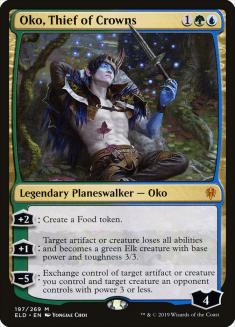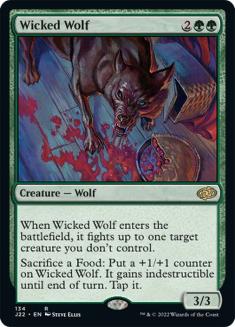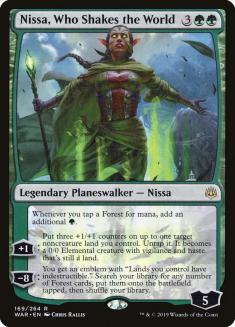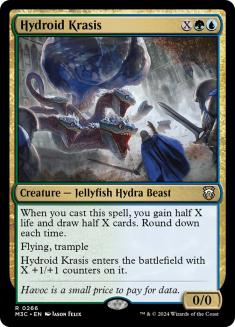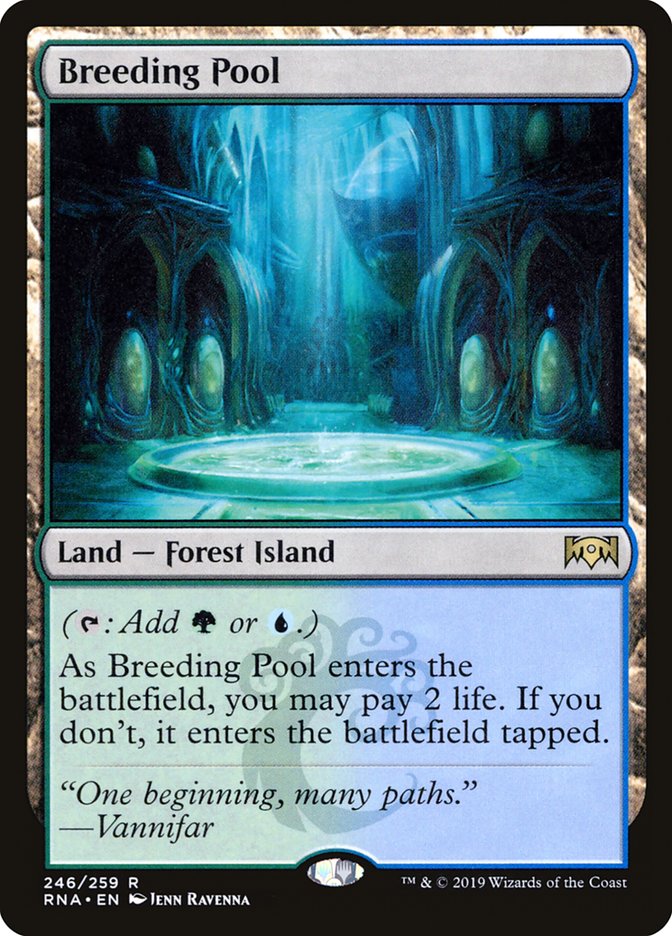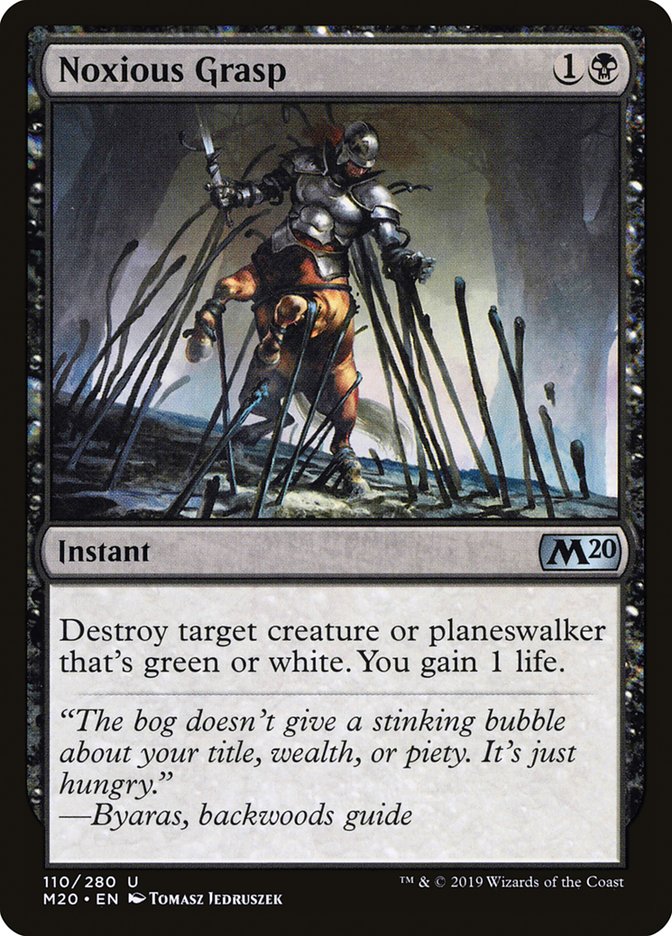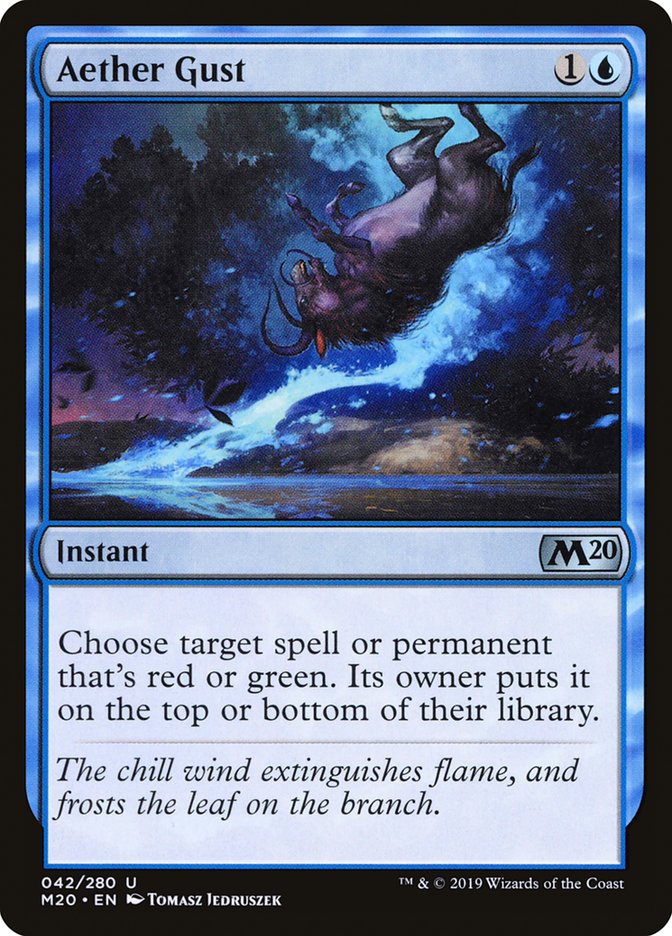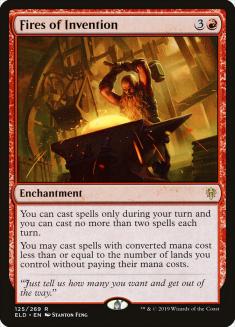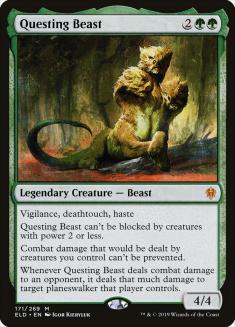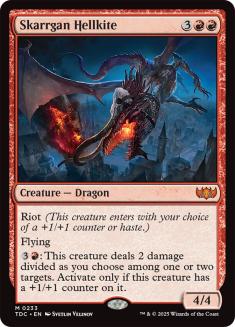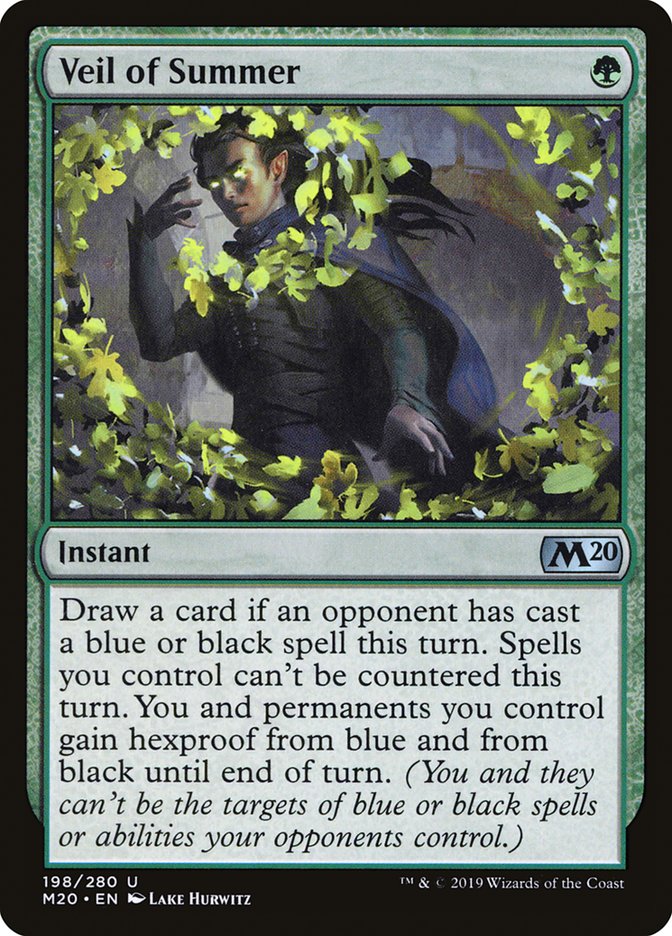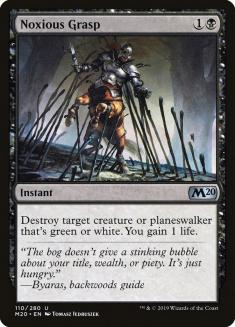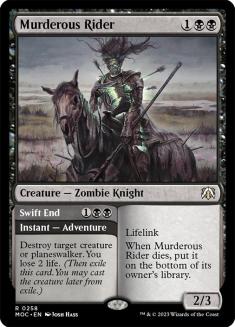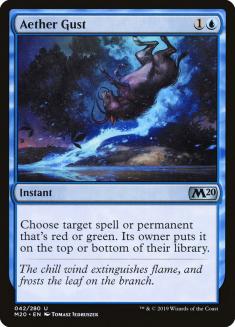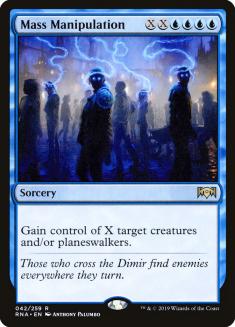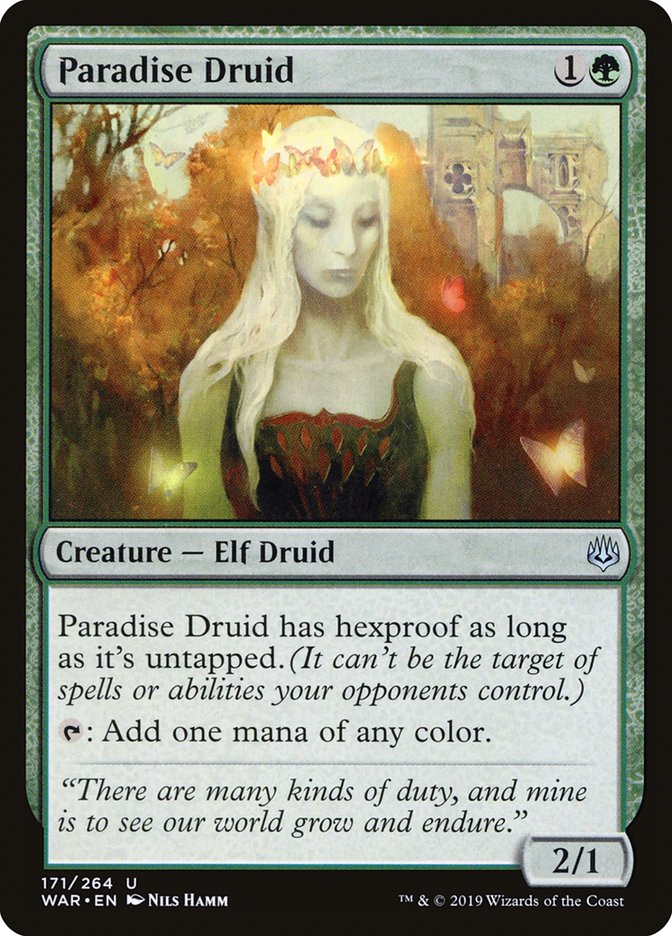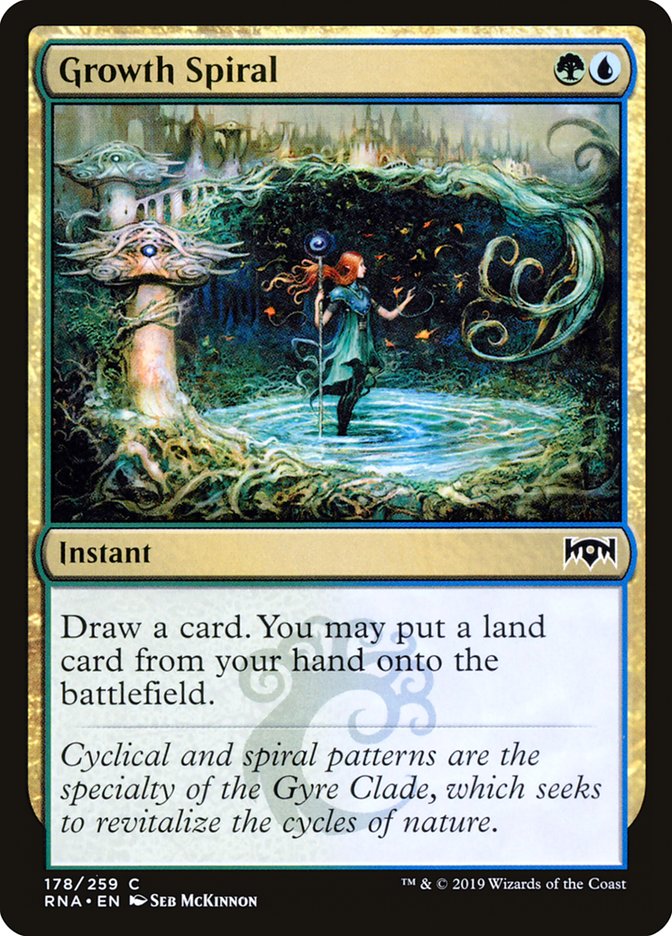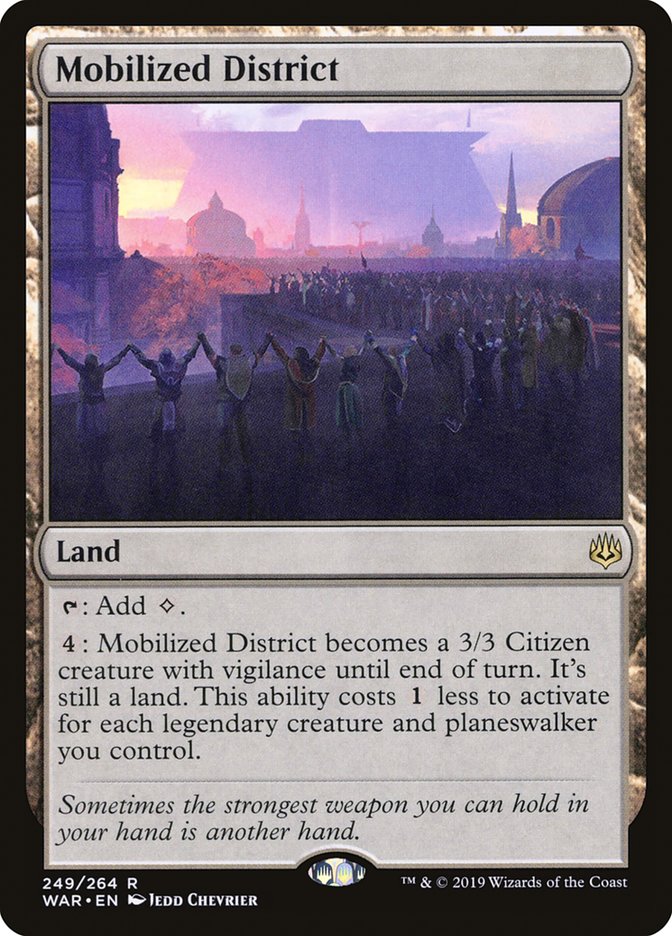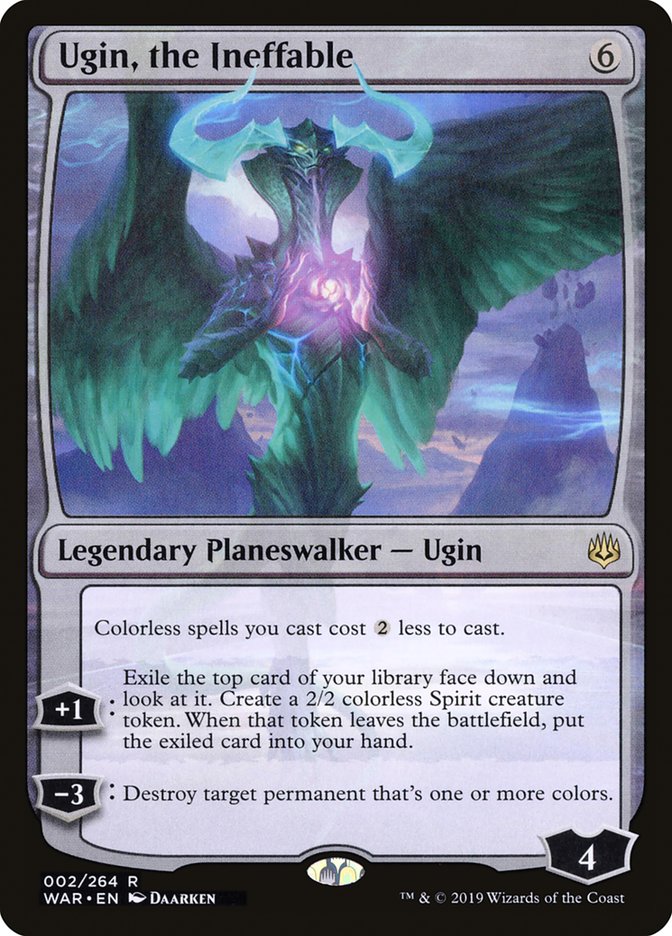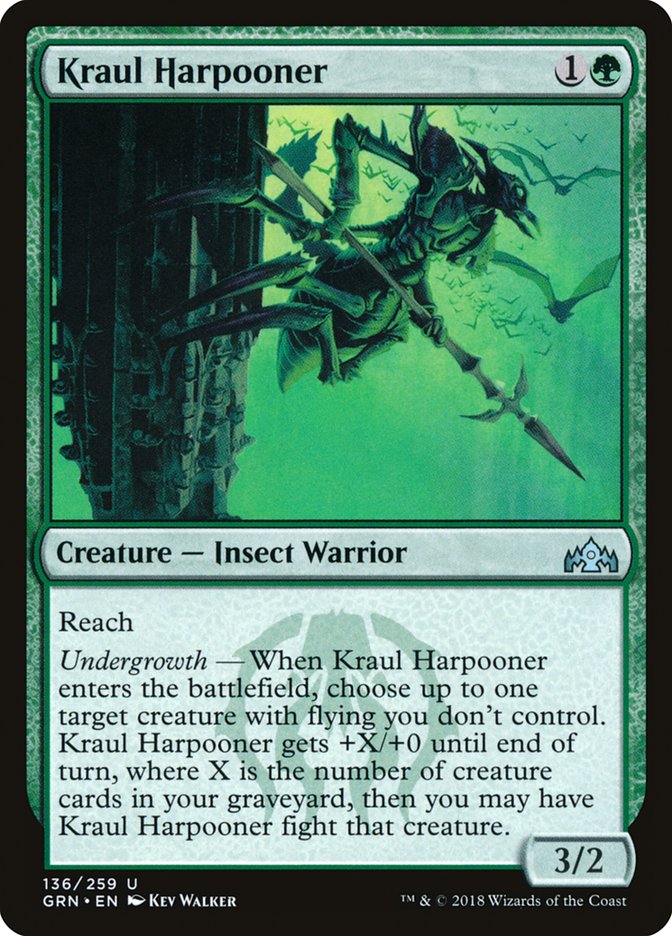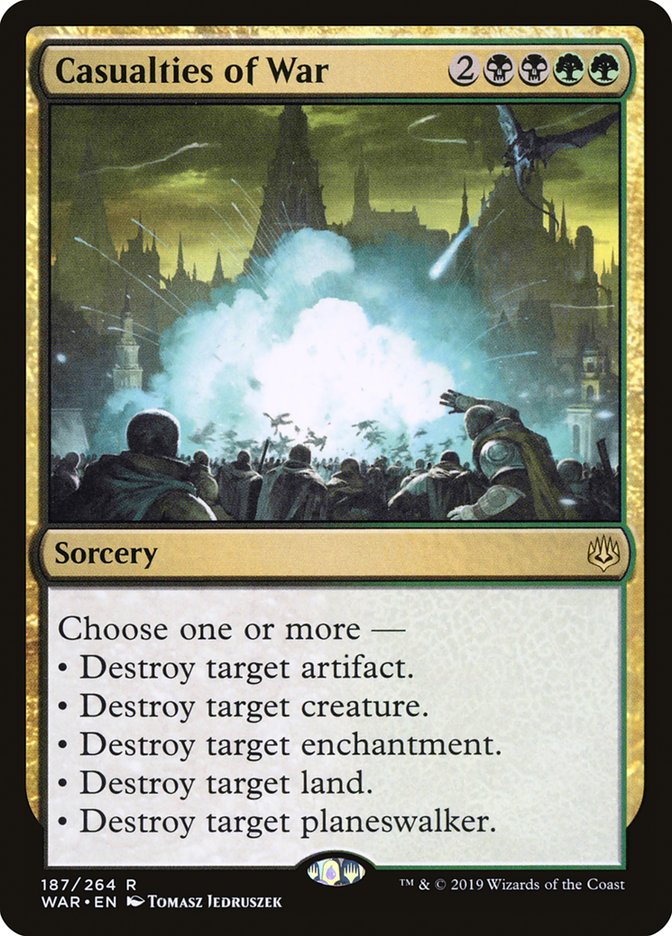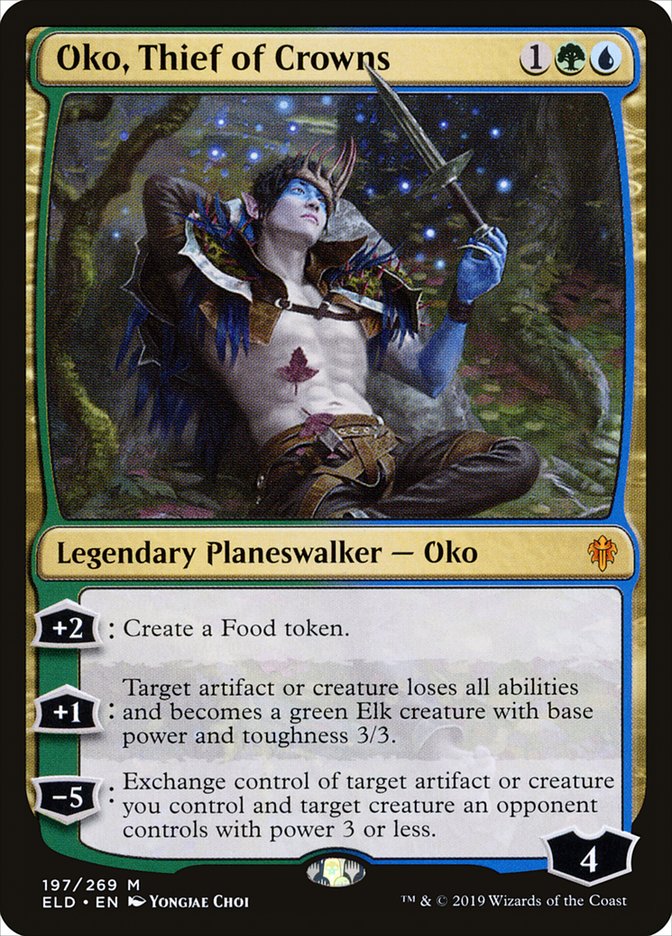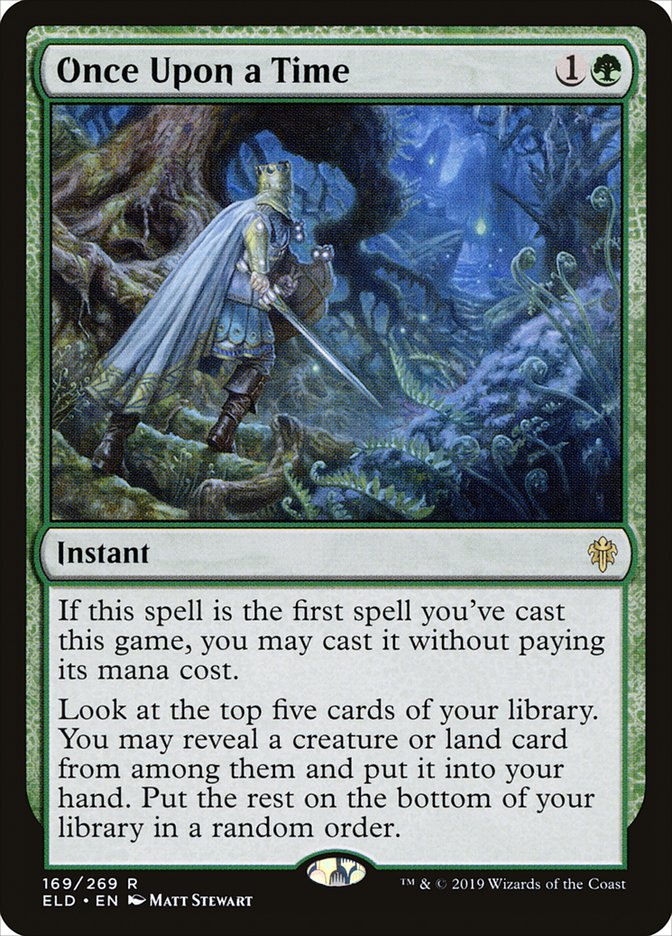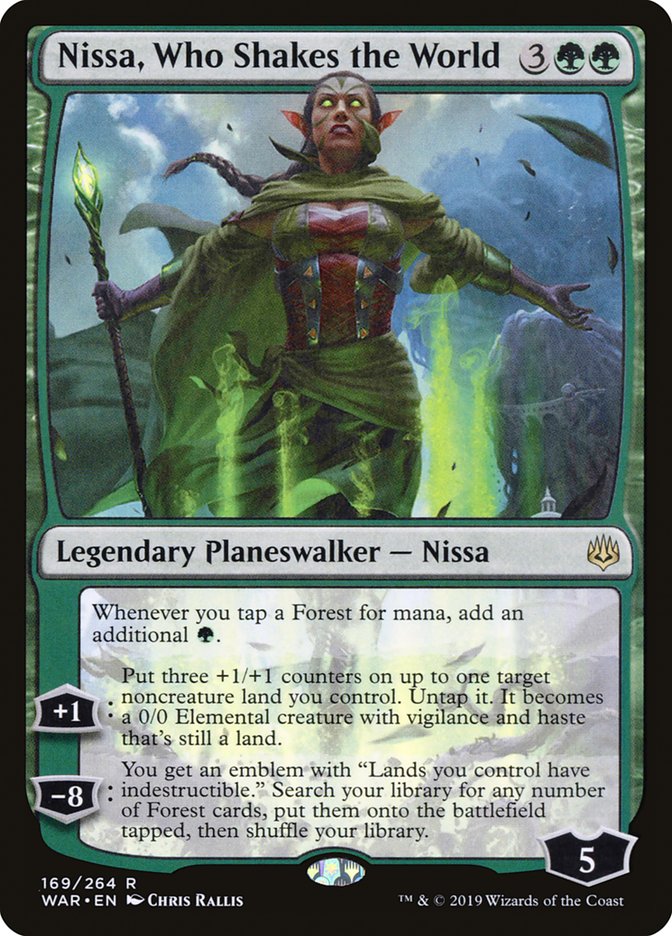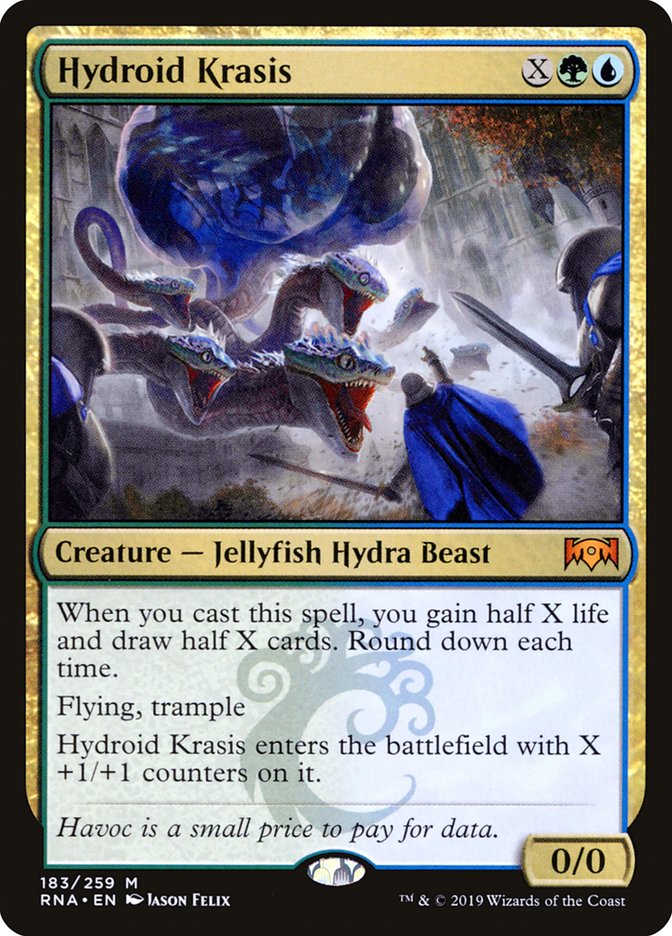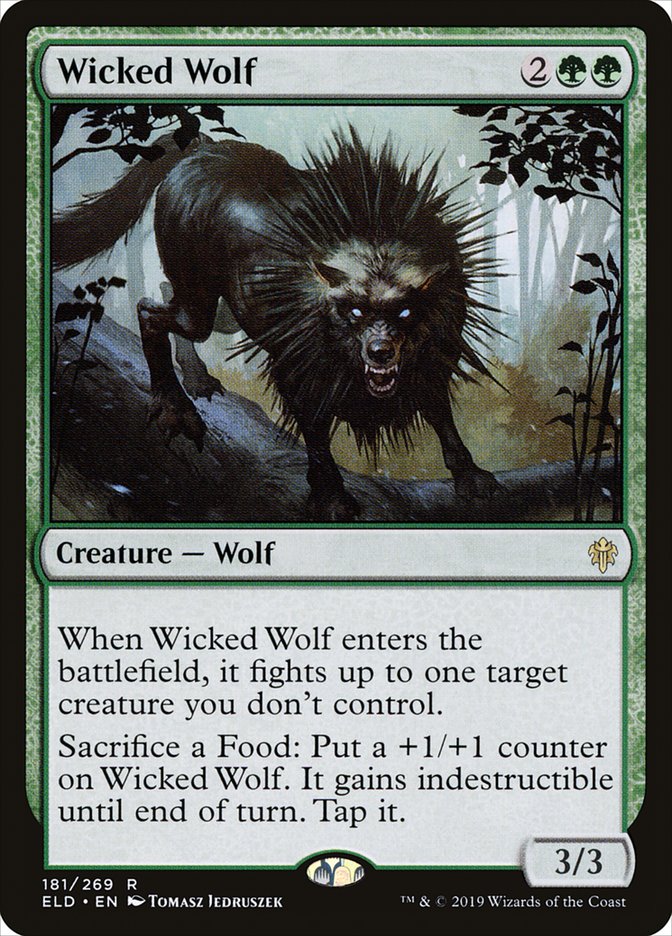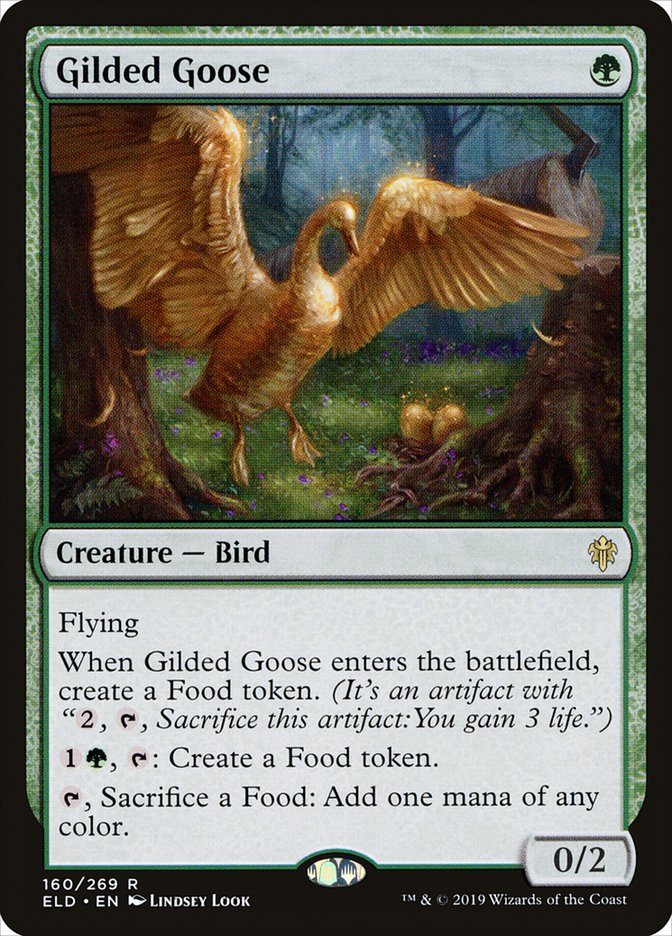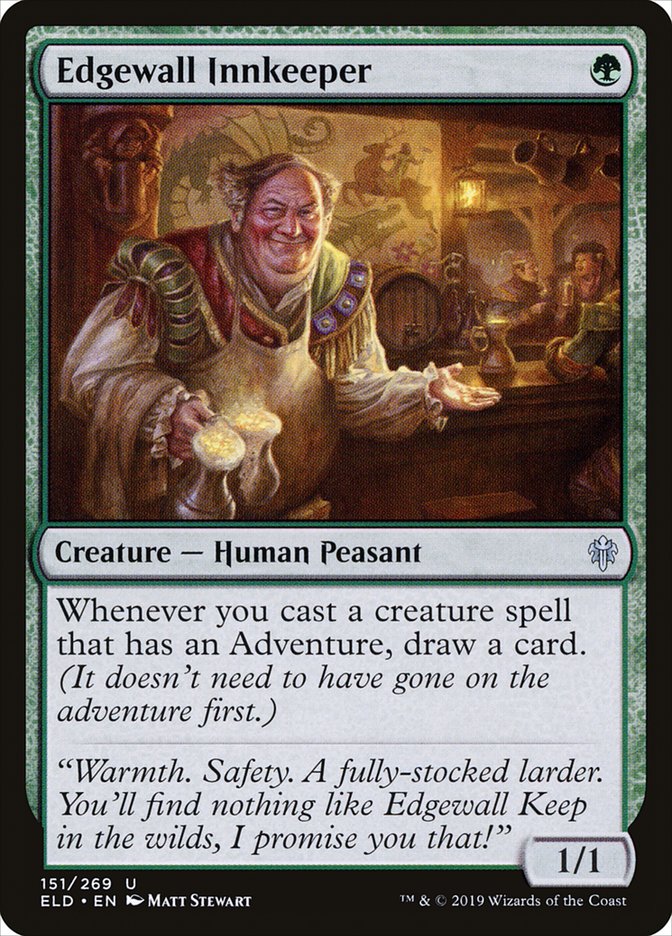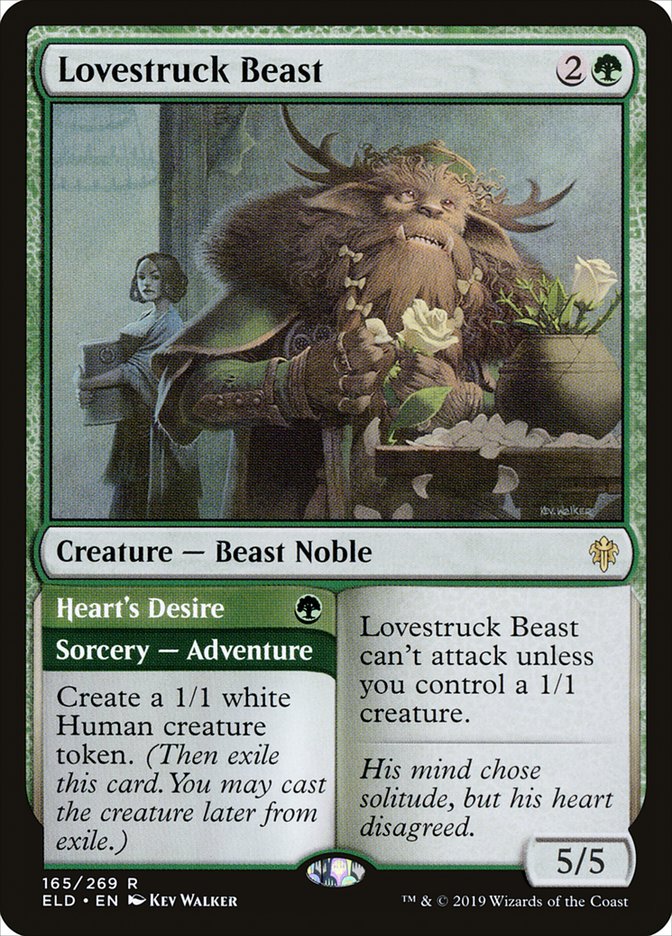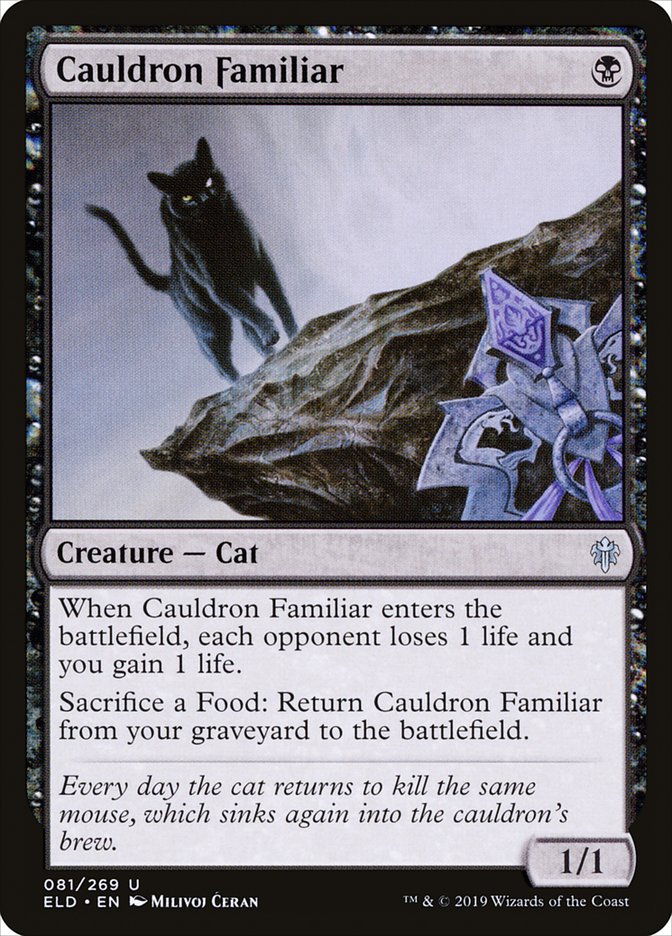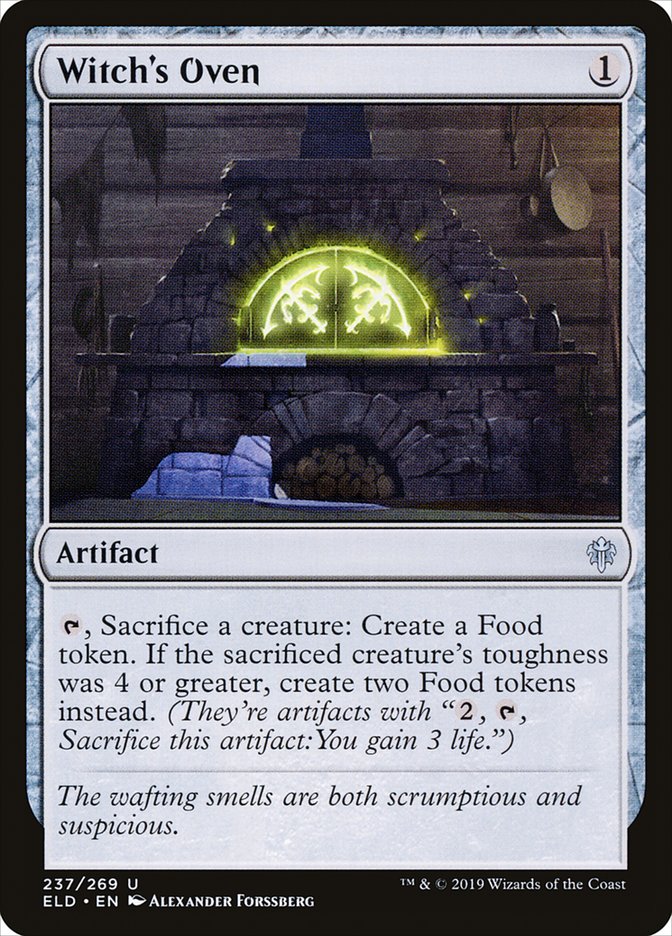From time to time, people describe a format as being a “one-deck format.” Never before has that been so true. To say that this Pro Tour Mythic Championship Tabletop Championship was imbalanced would be an understatement. This was, without exaggeration, the most homogenous Pro Tour in history.
Nice! 69% of the #MythicChampionshipVI field registered Oko, Thief of Crowns.
Check out our full Standard Metagame breakdown by @karsten_frank here: https://t.co/L6XUR6WoGk
Tune into https://t.co/we35sjOtfe to watch LIVE! pic.twitter.com/BaiAGi9F0y
— Magic Esports (@MagicEsports) November 8, 2019
It’s not just that something like 73% of players played Once Upon a Time and that the total number of copies of the card is now the new first place for most-played spell in a Pro Tour, percentage-wise (1397 copies out of a possible 1980). This tournament gives us a new number two. We’ve also got a new number three, a new number four, a new number five, and a new number six.
If I told you the three most played decks in a format were 37%, 19.0%, and 7.1% of the format, I’d have some serious concerns about that number one deck. However, if you then told me that the second most popular deck and third most popular deck were actually just the same as the most popular deck, they just use six or seven different support cards around a nearly identical deck… Well, I guess I don’t really have anything to compare that to.
Rebels, Affinity, Faeries, Academy, Survival/Recur, Mono-Red, Necropotence: none of these decks were ever 50% of a Pro Tour field, even if you could group every version of them (and that’s not even every version of Food deck). If you want to find the most-played spells of all time, you end up with a list of broken artifacts that defined formats too small for them, cards like Cursed Scroll and Umezawa’s Jitte. None of these cards have ever reached the kind of numbers the Food cards did this weekend.
Going into this Pro Tour, I was excited to attend, to help celebrate Reid Duke induction into the Magic Hall of Fame and to see awesome people. Given the lack of clarity about the next year of Organized Play and how the format looked, I didn’t really do much preparation for this event, preferring to focus on Pioneer. One thing I was fairly certain of, however, was that I would be registering four copies of each of the following six cards:
Gilded Goose and Wicked Wolf are merely very strong, but perfectly positioned for doing things Simic decks want, while also synergizing excellently with the most unbalanced planeswalker ever made.
Once Upon a Time is a major factor in increasing the repetitiveness of the format. It does promote some good things; but it also means drawing a lot more Turn 1 Gilded Geese and a lot more mid- to late-game Hydroid Krasipi (sic).
Nissa, Who Shakes the World? Definitely very pushy, but wouldn’t always be a problem if it were in a format balanced around different things. I do generally think Nissa has a tendency to make herself interesting, while incentivizing you to play with an awful lot of uninteresting cards. Like, don’t Nissa decks frequently just slide towards having 35-40 mana and a dozen mana sinks?
There were more Breeding Pools registered than Plains, Swamps, and Mountains put together. And, as if 69% Oko decks wasn’t homogeneous enough, the format was 87% green decks. So, there’s that.
To that end, I also knew I would be playing four copies of either Noxious Grasp or Aether Gust in my deck (if not some of both). When the format is basically entirely green, we’re well past the point of maindecking color-hosers, especially when there are some as flexible and strong as Noxious Grasp and Aether Gust. I can’t tell you how many cards and strategies people suggesting to me that were obviously devastated by all the maindeck Grasps and Gusts.
I was also confident I would be playing four copies of Veil of Summer in my sideboard (if not some copies in the maindeck), as this card doesn’t even make sense, how efficient, how devastating it is.
Why sideboard them instead of maindeck them? Well, first of all, if you like it in the Oko mirror match, go for it. This format is so outrageously lopsided, you should generally just have the 60 you want against Sultai Food as your maindeck. So, why Veil of Summer? Well, because why not? When you’ve got fifteen sideboard slots to dedicate against 31% of the field, you don’t actually have to cover that many bases and can just play the absolute most powerful, most targeted answers… And you can also play four Veils of Summer, since it’s actually just unreal against basically anything you would play to try to interact with Simic in any reactive way.
Discard, removal, bounce, permission, theft, all of it worthless, and for a single-mana cantrip. Of course, they probably should have known better than to even try, since it’s not like they’re beating a Hydroid Krasis anyway (or the one you Once Upon a Time for next turn).
Now we’re starting to get to the “interesting” part. Since the deck doesn’t really involve any deckbuilding, but rather just picking the best cards at each spot on your curve, that means we need another two-cost card. Given how powerful the planeswalkers and Hydroid Krasis are and how tempo-based the mirror match is, Paradise Druid is the go-to two-drop option for Sultai (where it’s an important part of making sure we can always play our black cards).
The day decklists were due, I was planning to play a Sultai list very close to what Paulo Vitor Damo da Rosa played and wrote about. After chatting with Josh Utter-Leyton, I decided to play the straight Simic list he was talking about, which included Growth Spiral instead of Paradise Druid. It’s basically the same sort of thing, but he thought it was marginally better if you don’t need the black mana.
Why Simic? I think Josh described it well: “Low confidence it’s marginally better.”
With everyone targeting Sultai, I didn’t hate the idea of sidestepping that focus a little. Besides, Aether Gust seemed like it’d be good if Fires of Invention or Wilderness Reclamation turned out to be popular. If nothing else, you don’t have to try hard to convince me to play Temple of Mystery instead of Swamp.
Given the highly scripted nature of these decks, especially if you play four copies of all the good cards, that leaves three or four slots (depending on if you want to play 24 or 25 land). With Growth Spiral instead of Paradise Druid, it seemed good to err on the side of more land, helping ensure we take advantage of the land drop.
Because we like to party, we made it a Mobilized District, which worked well for me insofar as it never cost me anything and was useful. That said, it didn’t really seem like the minor numbers of the role-players mattered all that much.
With one of my remaining three spots, I played a single copy of Ugin, the Ineffable (a card Gerry Thompson recommended that seemed and played great for me). Josh liked the idea enough, he decided to adopt it as well. The final two cards?
Yeah, Josh advocated playing two Kraul Harpooners to basically exclusively kill Gilded Goose for value, or trade with an Elk or a Krasis as a back-up plan.
I’m not saying there wasn’t tech for the weekend. More power to everyone with nice tuning. I’m just saying, despite no preparation and just playing the same thing as everybody else, I felt like the Standard portion went pretty well, and that none of my tech nor my opponents’ seemed to matter that much in the mirror. Josh’s list worked well for me and I’m glad I played it (earning a 3-2 record after 0-3’ing the draft).
Here’s what we played:
Creatures (14)
Planeswalkers (9)
Lands (25)
Spells (12)
Sideboard

What was my experience playing Simic Food?
Well, first of all, it’s not that there aren’t a lot of nuanced interactions and lines of play and so on. It’s just that the format is basically:
- 50% mirror matches
- 40% Food versus a much weaker deck, but one designed to beat Food
- 10% Anti-Food decks battling each other with atrocious Game 1 cards
And in the Food mirror matches? Well, let’s just say it’s really important to get an advantage going, because everything is so snowball-y, and there’s nothing you can really do to ever catch up.
Rather than dive into my matches or how to play this deck, let’s just go ahead and skip to the part where we figure out what all is getting banned, because this deck isn’t going to look anything like this next week, and while lots of these cards are awesome in Pioneer, you’re just going to fill out your deck with plenty of other “best cards at each spot on the curve.”
Okay, first of all, it’s very hard to imagine any world where this card isn’t banned. This card is just not even remotely close in power level to the curve most powerful cards exist on. There’s a reason this is the best planeswalker in Vintage, not to mention being so powerful in Legacy, Modern, and Pioneer. It starts with so much more loyalty than it costs, it’s mostly unassailable by cards that don’t get Veil of Summer’ed, including basically all creatures.
What’s wrong with the card?
Yeah, of course, the rate; but like, it’s not just the overall power level, nor the lack of satisfying counterplay. It’s how much of the card’s power comes from that +1 ability (not that it’s a “three-cost planeswalker” or whatever). You could make the card weaker lots of ways, but that +1 is the real problem. If the Elk ability was a -1 instead of a +1, we might be having a very different conversation right now, despite the card being absolutely incredible.
Alternatively, they could have made the +1 ability only hit your stuff, reducing how trivially it invalidates text boxes. This version has better incentives but might not play as interestingly. Either way, the implied ability to just Elk any and everything, all the while gaining loyalty, is just bananas as part of such a powerful package.
It’s not like banning Oko is going to remove the card from competitive play or anything, either. The card is going to be fantastic in every format it stays legal in. Of course, it’s also not like banning Oko would be enough, so let’s just rip that Band-Aid off right now.
I wonder what things would have been like if Once Upon a Time just cost three mana (while still being free as your first spell). That isn’t the world we live in, however.
Once Upon a Time is ridiculously strong and reliable, stacking unreasonably well with the London Mulligan rule (which still seems like a worse rule to me, at least from a gameplay repetitiveness perspective). It wouldn’t necessarily be the end of the world, but when the entire color of green is out of balance, banning its most omnipresent and efficient draw-smoothing enabler is a way to preserve as much of the color’s gameplay as possible while making its draws less consistent and repetitive.
If you just ban Oko, I don’t know that there’s enough incentive to play nongreen decks yet, as the format is just so overwhelmingly long on green power. Part of the problem, though, is that it has so many incredible cards, it’s hard to fix with just bannings. For instance, take Nissa, Who Shakes the World, which is more powerful in context.
She may be incredible, but what is her true value over replacement? It’s not like you can’t just play other powerful cards for four, five, or six mana. Yeah, it definitely matters, taking away their power, but this is the only format she really sees play, and it’s not like the format becomes more fun if you ban the definitional cards, the cards with play to them, that give decks some shred of identity. I’m also not sure banning Nissa alongside Oko actually makes the format more diverse than just banning Oko (to say nothing of probably being less fun).
I’m a lot more sympathetic to a Hydroid Krasis ban, but at the end of the day, powerful ways to spend your mana just aren’t the bottleneck for these decks. Besides, with the banning of Oko, I think it’s important to ban a mono-green deck, as there’s already a real risk of other green decks rising up.
I’m telling you, banning the definitional cards that speak to the themes and mechanics, that involve putting a piece on the table that does something, is not where we should be looking first. If Oko weren’t so beyond the pale, both in power level and at invalidating textboxes, it’d generally be better not to ban him, either (which is why it’s understandable that they decided to ride with him for an extra month).
I’ve seen plenty of people suggesting banning Veil of Summer, and I think it’s an interesting question. First of all, I think there’s exactly zero reason why Veil of Summer should be evaluated on a more generous curve than other power cards when it comes to bans. It’s not like Veil of Summer is some load-bearing beam the format is built on.
Yeah, you could imagine a format where permission is strong and held down by Veil of Summer, but that’s just not remotely the world we live in. Permission has been so well-balanced for so long, Pioneer actually just banned Veil of Summer to help give permission forms of interaction a little breathing room. The card was almost singlehandedly crippling the entire class of cards from competing at a high level.
So, with Veil of Summer banned in Pioneer, does that mean it’s definitely getting banned in Standard?
I don’t think so. I mean, it is some evidence, it is some signal; but I think the goals of the formats are different enough, it’s not just an efficiency thing. If they banned Veil of Summer instead or in addition to Once Upon a Time (and of course, alongside the absolutely vital Oko ban), I wouldn’t be shocked, and I’m confident either one is at least better than just banning Oko.
While Gilded Goose getting banned would be disproportionately punishing to green decks than power cards like Nissa or Hydroid Krasis, I think it’d be pretty unwise. The card is fun, has a lot of play and counterplay, and is crucial to the functioning of some other cards that are quite fun and already hurt by the banning of Oko. While supplementing the Oko ban with banning Gilded Goose would seriously hurt green decks, I think it would actively make the format substantially worse than banning nothing besides Oko. I mean, you could ban Forest, and that’d really mess ’em up, but the format would not be more fun.
Remember, it’s not just Food strategies that are so strong for green. Oko may be at such a crazy level that everything is warped around it, but with Oko out of the way, it’s not like it’s going to be worse for Edgewall Innkeeper. That’s at the core of why I think they need to ban one of the all-around green cards that just inflate the color. Once Upon a Time improves the consistency of these decks so much and seems the most logical to me, but at least Veil of Summer would also hurt every single green deck.
Remember, there’s still the looming threat of Cauldron Familiar and Witch’s Oven. Banning Once Upon a Time would help reduce the consistency of these decks (though banning Veil of Summer would make it harder for them to avoid getting blown out by Casualties of War).
So, what do I think they should do?
They are arguably the strongest cards, but they are also serious contributors to invalidating text boxes and increasing repetitiveness. They are both so strong that they are staples in basically every format, so it’s not like this is all she wrote for them. It’s also not out of the question to think one or both may get banned in more powerful formats as well, eventually.
If for whatever reason they didn’t want to ban Once Upon a Time, Veil of Summer would be my next pick as a second ban. If they wanted to be extra-super-sure to change up the format, I also think it’s totally reasonable to ban it on top of the other two; and any combination of Oko and these cards would be an improvement.
What would need to be banned if they didn’t want to ban Oko?
I would guess you’d have to ban at least Once Upon a Time and Veil of Summer, as well as at least one of Nissa or Hydroid Krasis. Even then, there’s a good chance you’d fall short unless you ban both of the top-end cards, as Oko would just keep being so distorting and you’re not going to have any trouble surrounding him with all great cards.
Bill Boulden: What happened to Jace, the Mind Sculptor being better than all?
Patrick Chapin: It’s not like he didn’t say he was coming to steal the crown…


